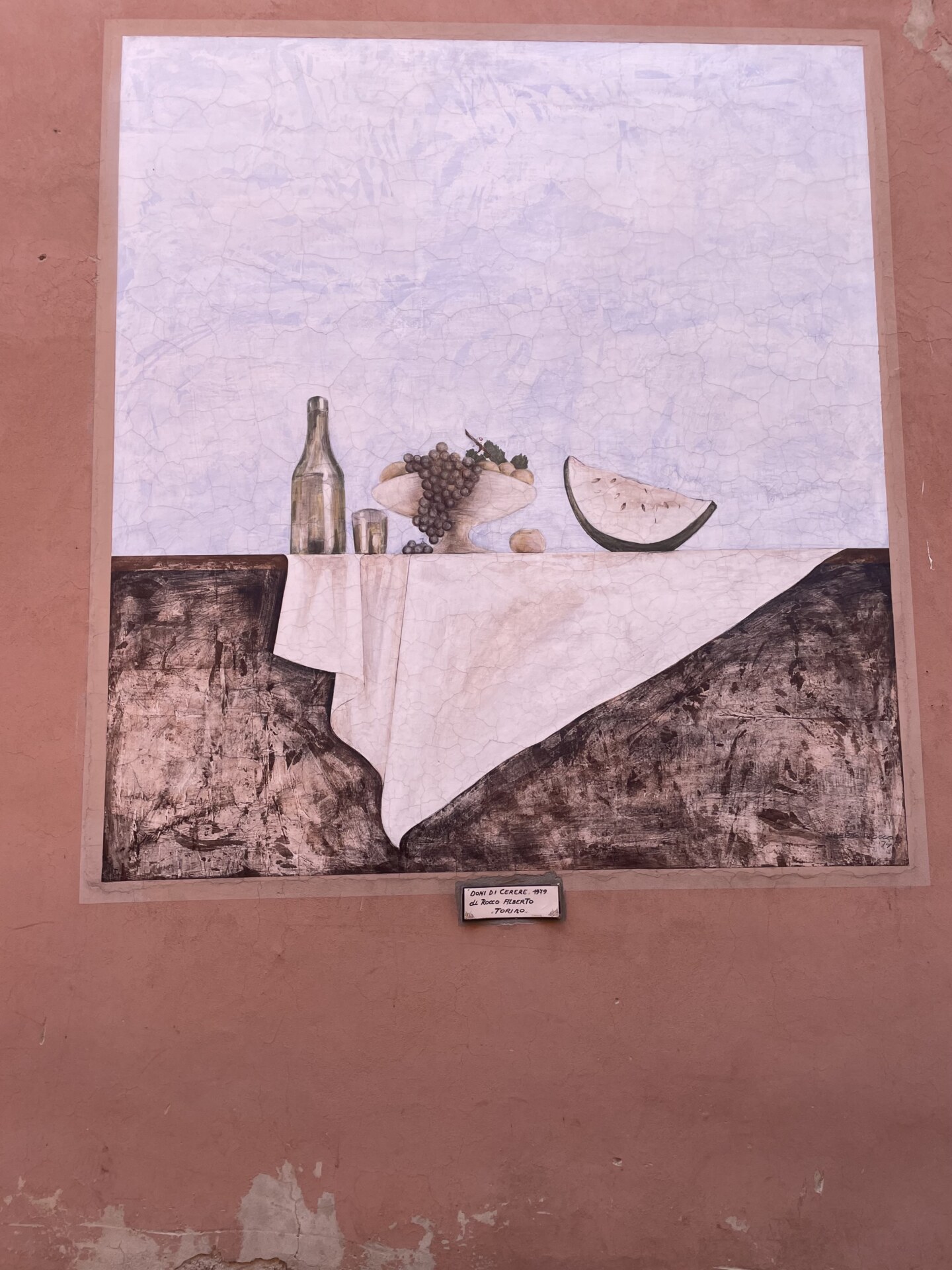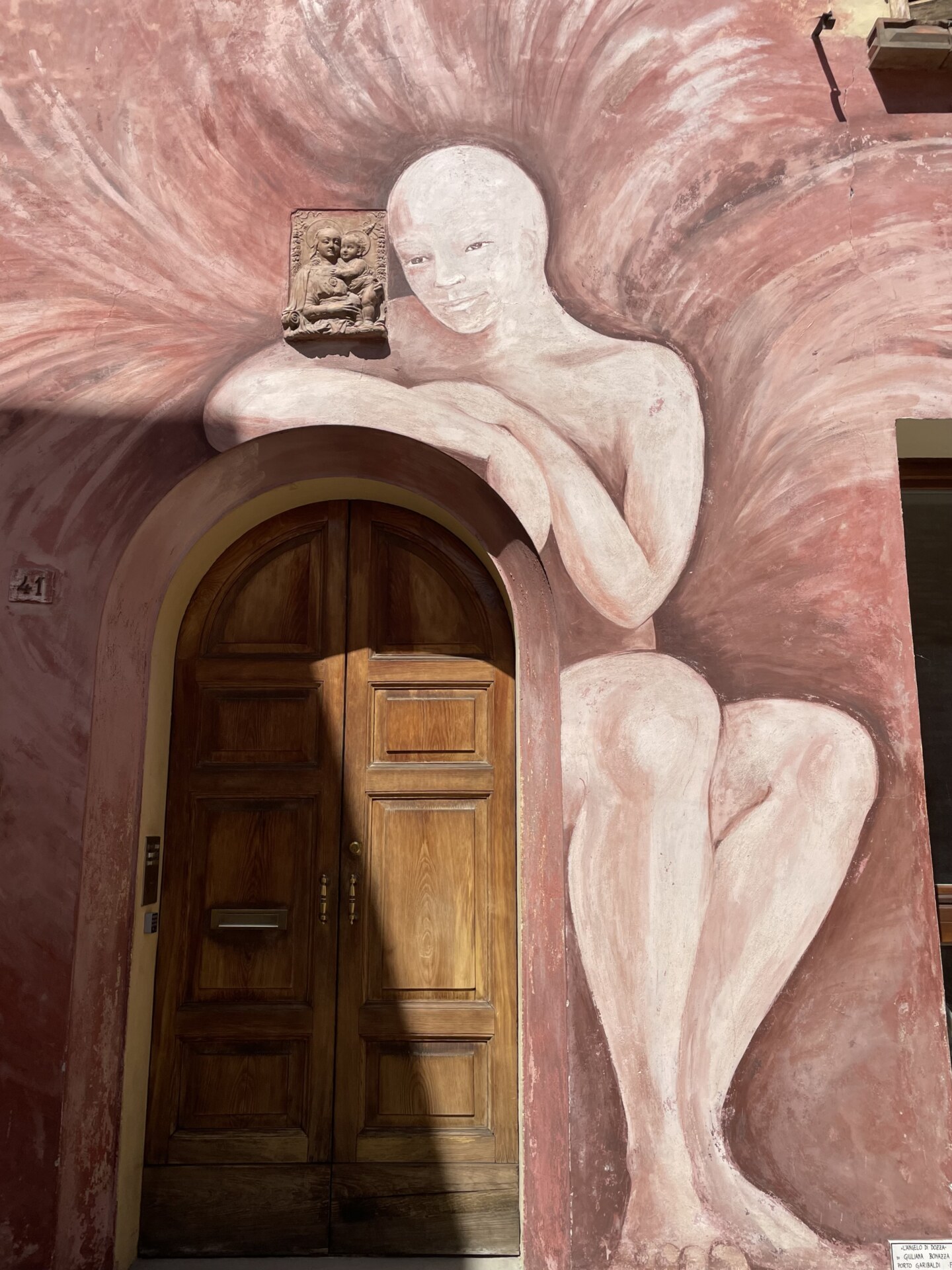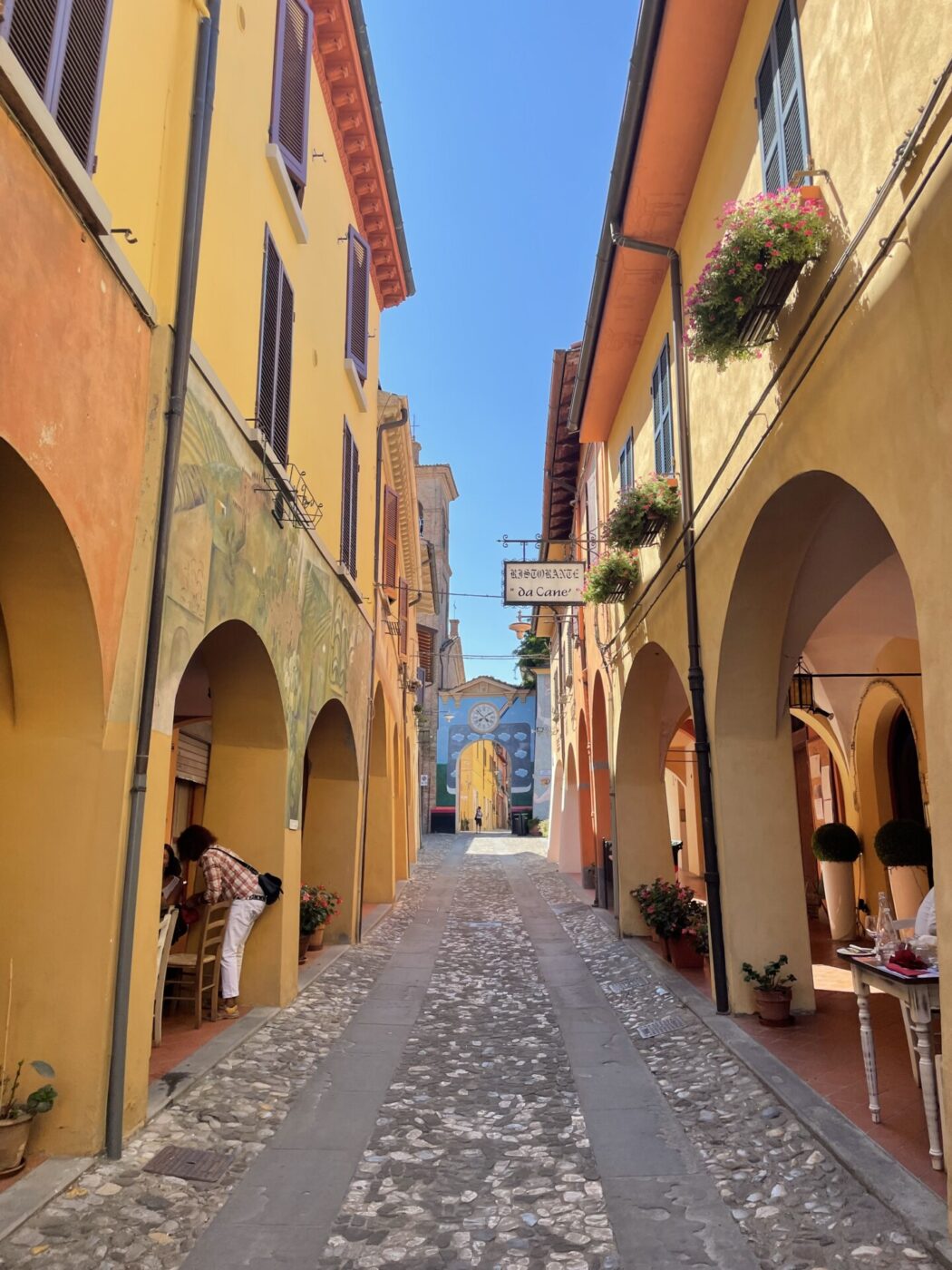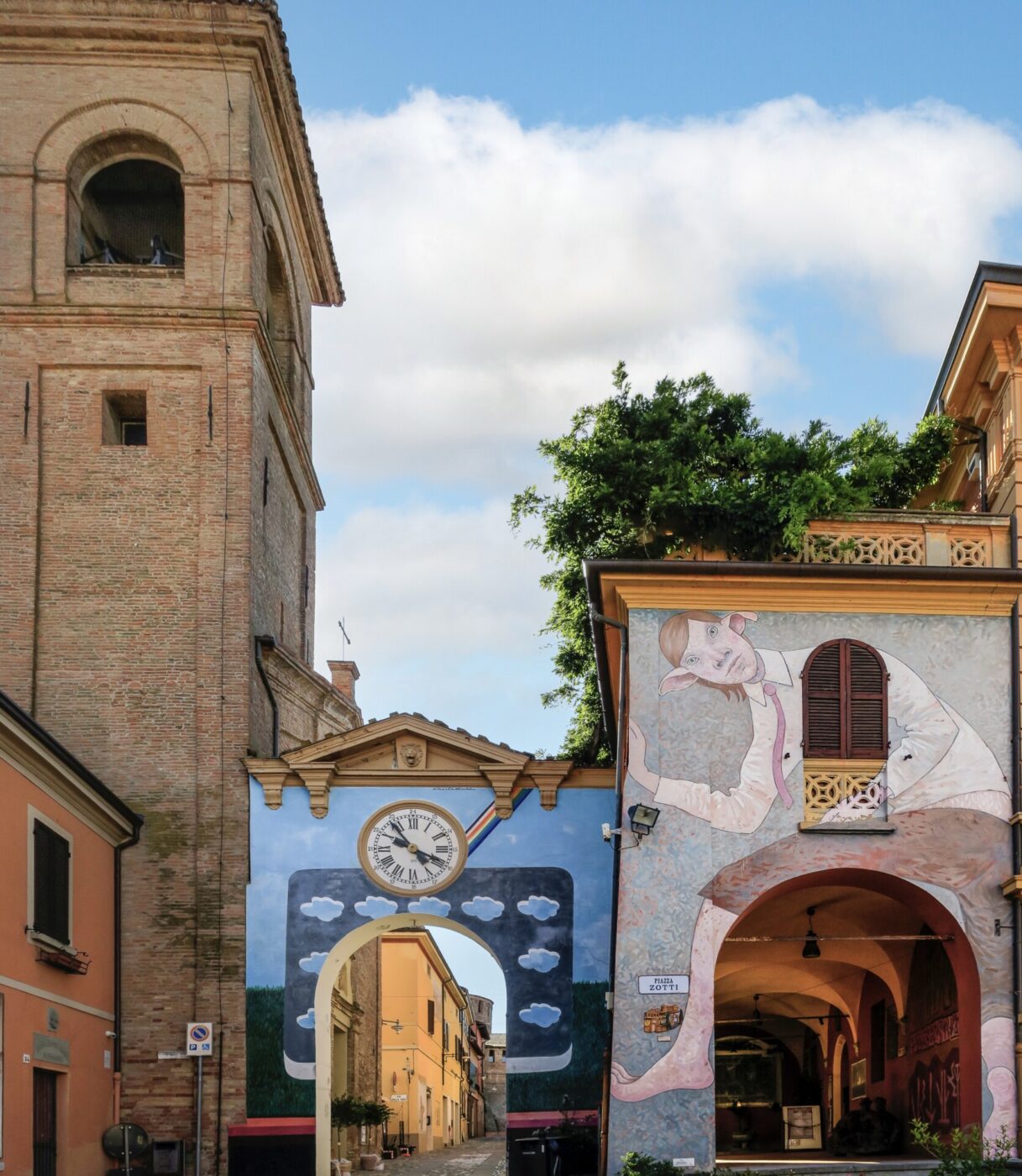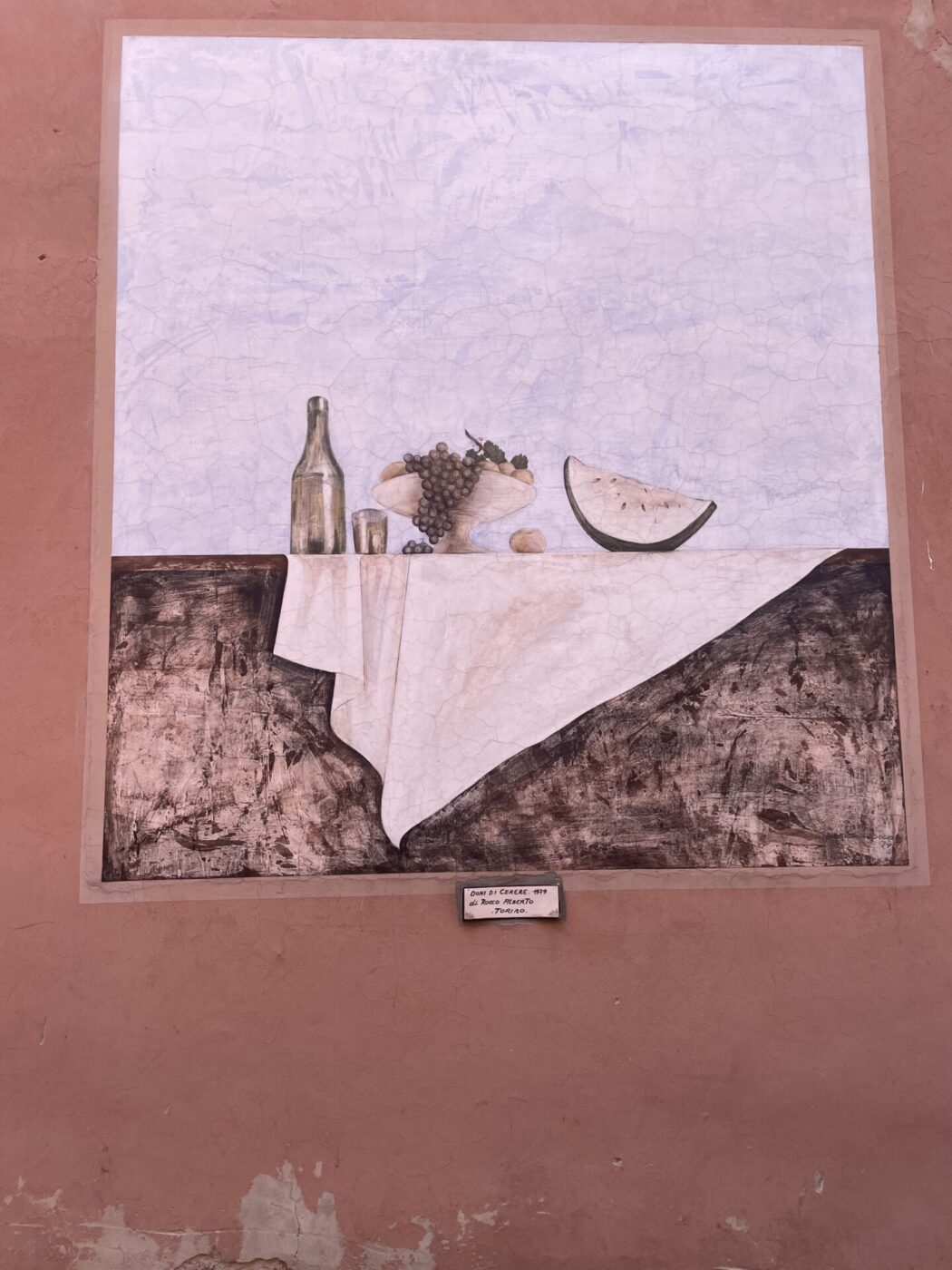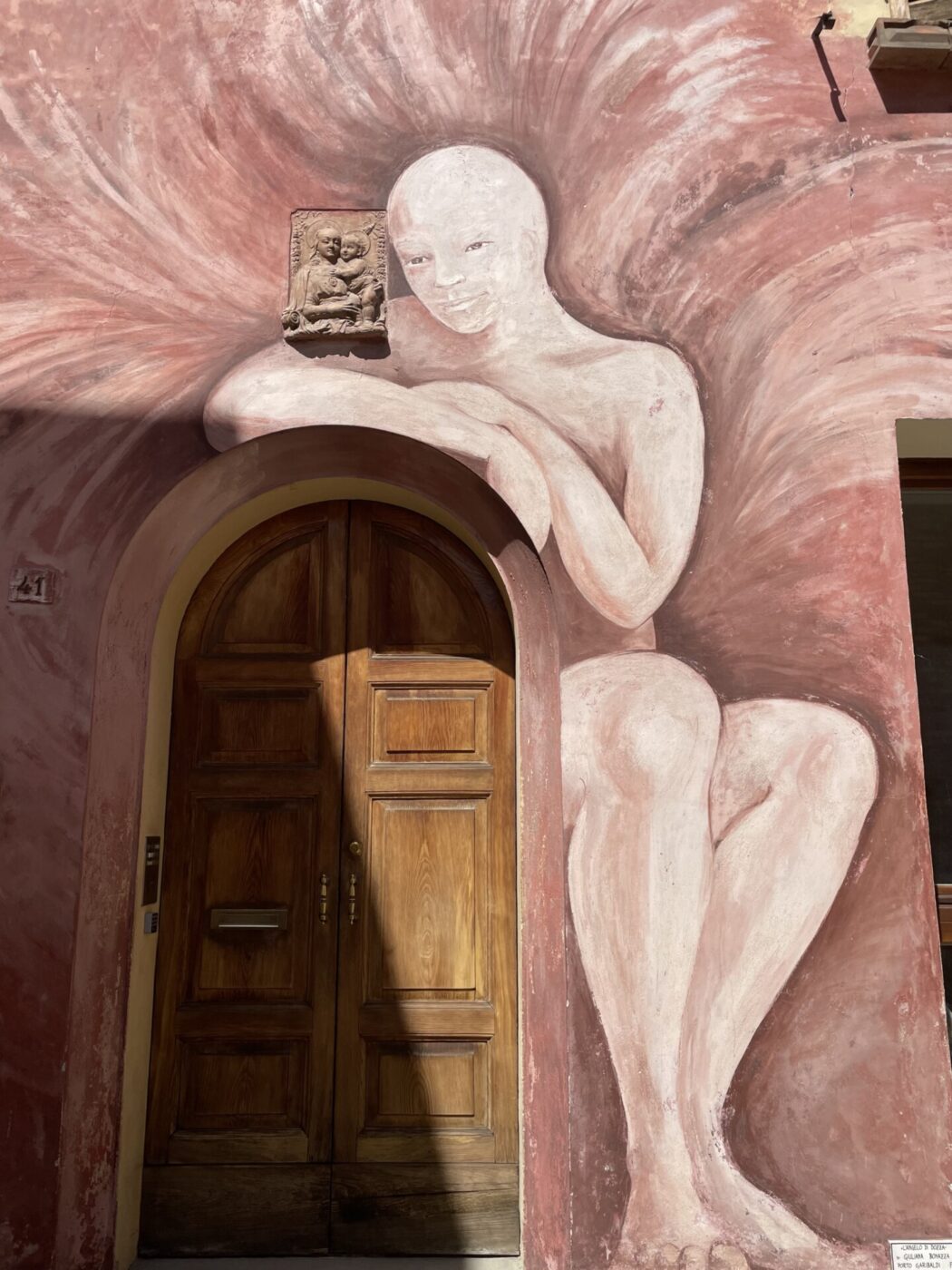It’s the stuff of an Instagrammer’s dream–and yet it hasn’t become a touristic nightmare. In the colorful Emilia-Romagnan municipality of Dozza, rather, photographable street art has brought a new wave of life and spared the town the depopulation faced by many its neighbors.
Amidst expanses of vineyards 35 kilometers east of Bologna, Dozza’s first houses date back to the 9th century, and the walled fortifications to 1086; right on the border of historic Emilia and Romagna, the medieval village was the site of more than a few battles and conquerings. But it wasn’t until 1960 that the town gained the vibrant visual identity for which it is known (though not to many!) today.
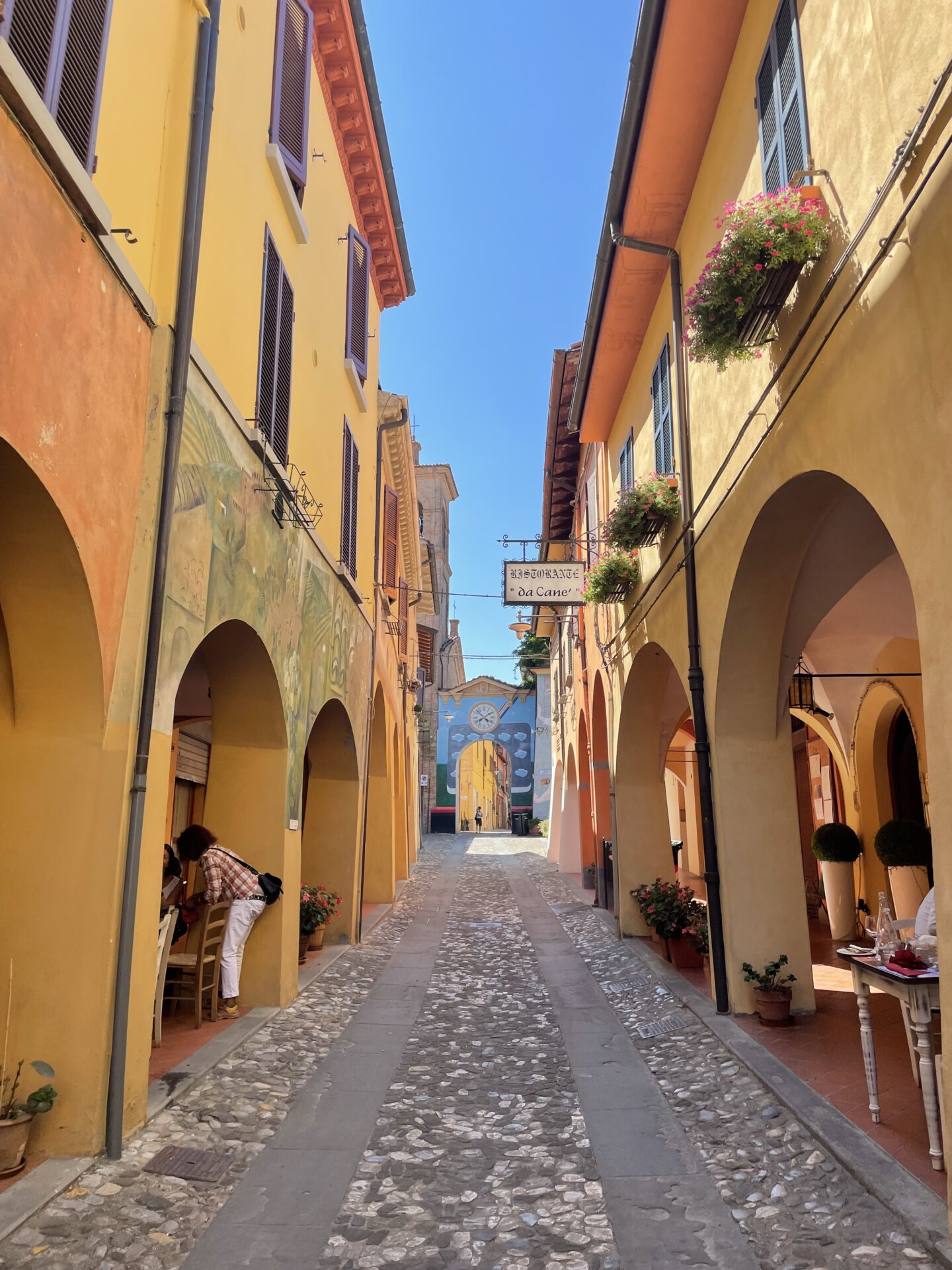
Those with a passing familiarity of Italian culture will know that the 1960s–the moment of the “Economic Miracle”–brought a cultural (and countercultural!) revolution in Italy, marked by the emergence of new music styles, fashion trends, and a generally more liberal attitude in the streets. Wrapped up in this shift was a drive for art to be more accessible and inclusive, with many breaking away from traditional gallery settings and embracing a more spontaneous and dynamic approach to art. Exhibitions often took place in public spaces, allowing artists to engage directly with their audiences.
Inspired by this movement, as well as the historic traditions of painted walls in Italy (think frescoes, murals, and the vivid houses of Liguria), Tomaso Seragnoli, the then mayor of Dozza, started the town’s own art festival, the Biennale del Muro Dipinto, bringing artists from around the world to paint, not on canvases, but on columns, porticoes, archways, and facades. Every odd year since 1960, a week in September sees the streets and squares of the town turn into temporary studios; thus far, about 200 painters have left their mark on Dozza, what many call “an open-air art gallery”.
Today, the town is a kaleidoscope of tints, tones, and styles, with works running the gamut from landscapes to comic strips, fairytale sketches to still lifes, abstract murals to realistic portraits. A surrealist countryside side scene frames an archway. An elfin Ron Weasley-type in a suit capers over the one next to it. A tabby cat stares grumpily from above a window, and an azure sky, dotted with wispy clouds, frescoes an underpass. A cubist creature hovers, mid-conversation, above a doorway.
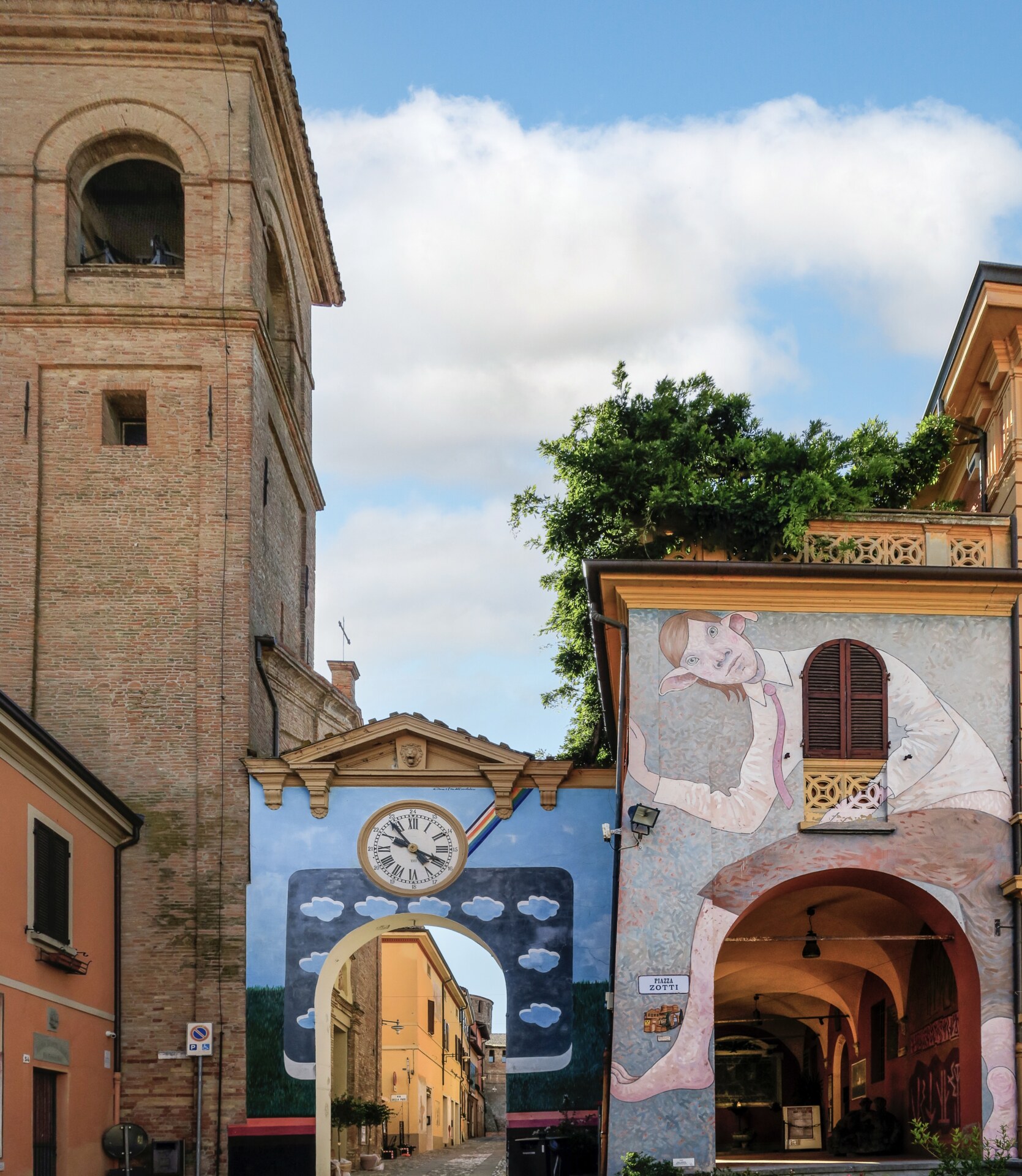
Photo by Vanni Lazzari
“Artists are quite free to decide what to paint on the walls and which techniques to use,” says Giulia Nanni of Fondazione Dozza Città d’Arte, which currently runs the festival. Both local and international creators travel here for the festival, Giulia tells me, including ones from Japan, Poland, Chile, and Austria–and a few renowned names can be counted among them. Expressionist painter Bruno Saetti’s Sun on the red wall (1967) can be found here, as can prominent Chilean Surrealist Sebastian Matta’s Milling (1965); other works of the latter hang on the walls of the Guggenheim. Other big-name signatures include contemporary artist Riccardo Schweizer, Giuseppe Zigaina, Emilio Contini, Concetto Pozzati, Remo Brindisi, and Riccardo Licata. It’s pretty spectacular for such a highbrow collection of art to be accessible to all, free of charge.
Though the first years were competitions, with a panel choosing winners, prizes were abolished in the 70s in order to “emphasize the primacy of the artist,” says Giulia. “The history of Il Muro Dipinto is, therefore, a story of artists and their works.”
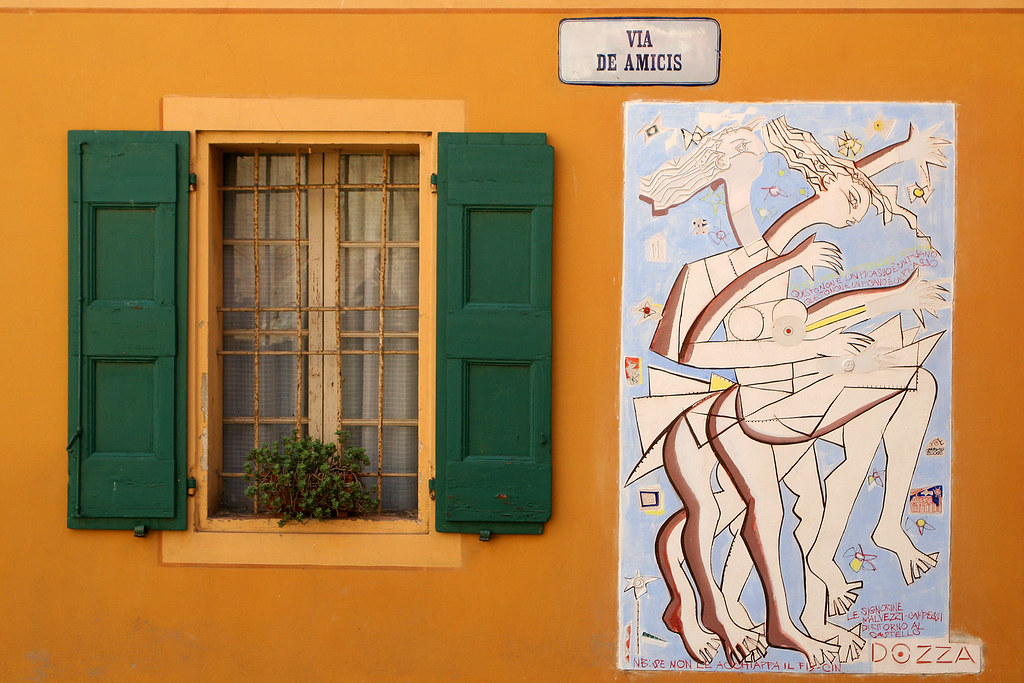
Photo by Roberto Ferrari
Dozza is pocket-sized, counting less than 7,000 inhabitants; two cobblestoned streets run in parallel to each other, forming a little loop that takes not much more than 10 minutes to walk. In just one afternoon, you can see most all the artworks and visit the town’s fortress, where the Centro Studi e Documentazione del Muro Dipinto archives and displays historic sketches of the painted walls.
In size and history, Dozza is not so different from the many small borghi that dot the rest of the Sellustra River valley, yet it feels worlds apart. The countryside of Emilia-Romagna faces what many other Italian extra-urban areas do: an aging demographic, agricultural modernization, and depopulation, with younger generations heading towards cities like Bologna at first opportunity. Dozza, however, has seen its population double since 1961–an impressive anomaly. “Once a small village inhabited only by its residents, Dozza is now an art city that attracts thousands of tourists every year,” Giulia echoes. Dozza’s transformation from a secluded village to a bustling hub of artistic expression is clearly and closely tied to the success and growth of Il Muro Dipinto–and it’s a powerful testament to the ways in which cultural events can foster healthy tourism.
While many other similar spectacles in Italy seem to be built for tourist eyes–and tourist eyes only–Il Muro Dipinto’s sustainability relies on local engagement. Giulia explains that the residents of Dozza welcome each edition of the Biennale with enthusiasm, particularly because “the artists paint in direct contact with the public and in relation to the urban context.” The Dozzese are invited to watch the painters at work–the 2023 installment of the festival, the Biennale’s 29th, was organized around the theme “Art in Progress”–and presentations are scheduled throughout the festival to encourage dialogue.
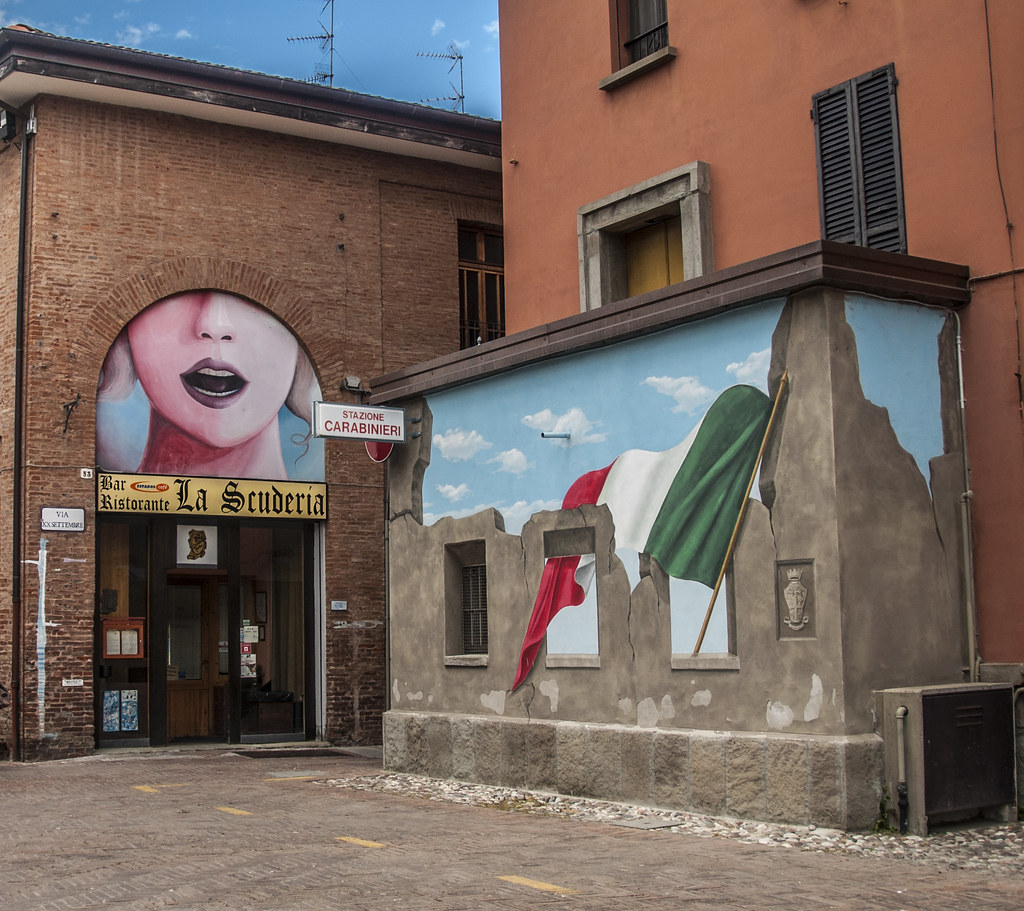
Photo by Marica Rossi
Recent years have seen an evolution in attitude towards street art, with galleries and festivals that celebrate the art form popping up around the country–among them Cvtà Street Fest in Molise, Street Levels Gallery in Florence, and the now-defunct Fest in Puglia. To keep up with the times, Giulia tells me that Il Muro Dipinto has worked on “renewing its formula” and “opening up to the expressions of contemporary artists.” Since 2007, the Biennale has also operated in the hamlet of Toscanella, which features graffiti-style writing and street art, while the ancient village of Dozza continues to “favor pictorial interventions on the walls.”
In 2001, Dozza joined the ranks of the “Borghi più belli d’Italia” (“Most Beautiful Villages of Italy”), a non-profit association that protects and celebrates small Italian towns with historical and artistic heritage. All things considered, you would think that the place would be swamped with visitors, and yet, even on a beautifully sunny summer’s day, it’s quite empty–peaceful, with the usual rhythms of a small Italian town underway. There are no swarms of selfie sticks, no one elbowing for the best shot. Many from Bologna have never even heard of the town. In this day and age of Instagram and TikTok, it’s refreshingly rare to have someplace so beautiful so untainted by crowds–a factor that could be chalked up to its inaccessibility. There are very few public transportation options–no trains, just a couple buses–so most reach the borgo by car or by a 15-minute taxi from Imola (which is reachable by train from Bologna).
Anyone who’s traveled around Italy in recent years will understand what a gift this is. As tourist arrivals reach a count of 75 million, high-profile museums with notoriously long lines–that are only getting longer–and pricey entrance fees–that are only getting pricier–are becoming less and less attractive. Dozza, and Il Muro Dipinto, instead stand as a reference point for how to make art a democratic and inclusive experience that thrives well beyond the four walls of a gallery.
